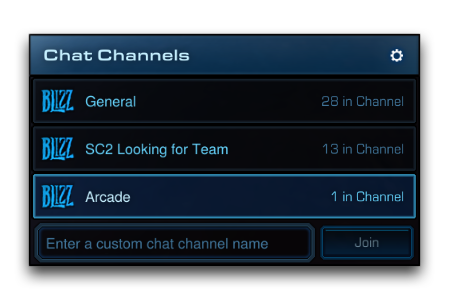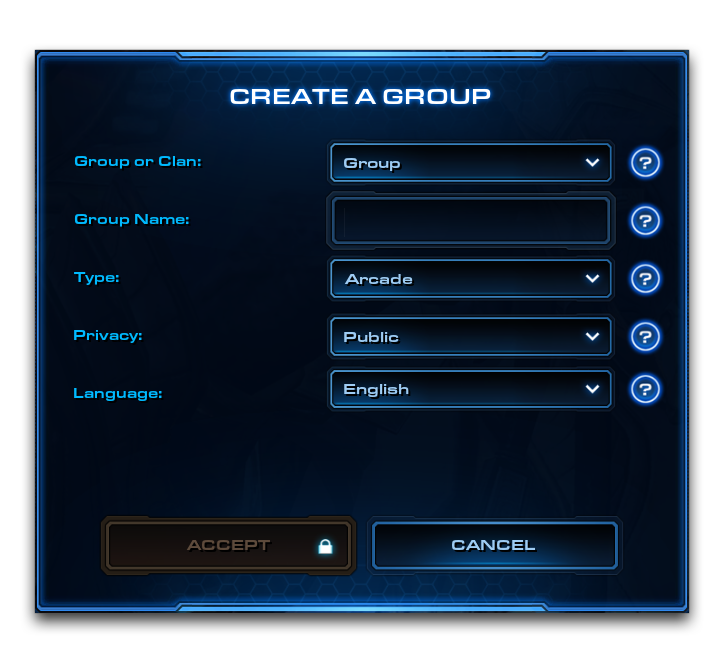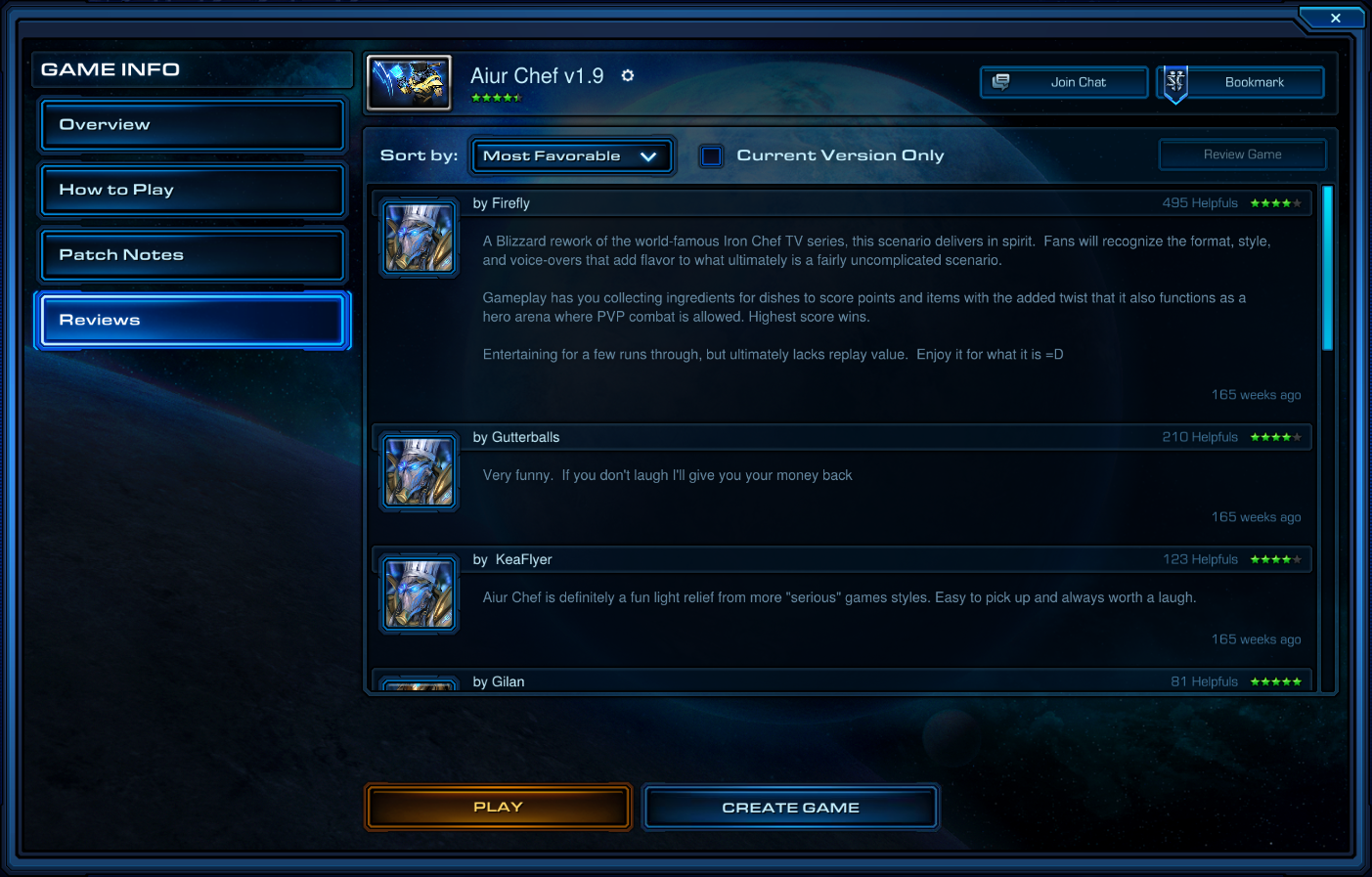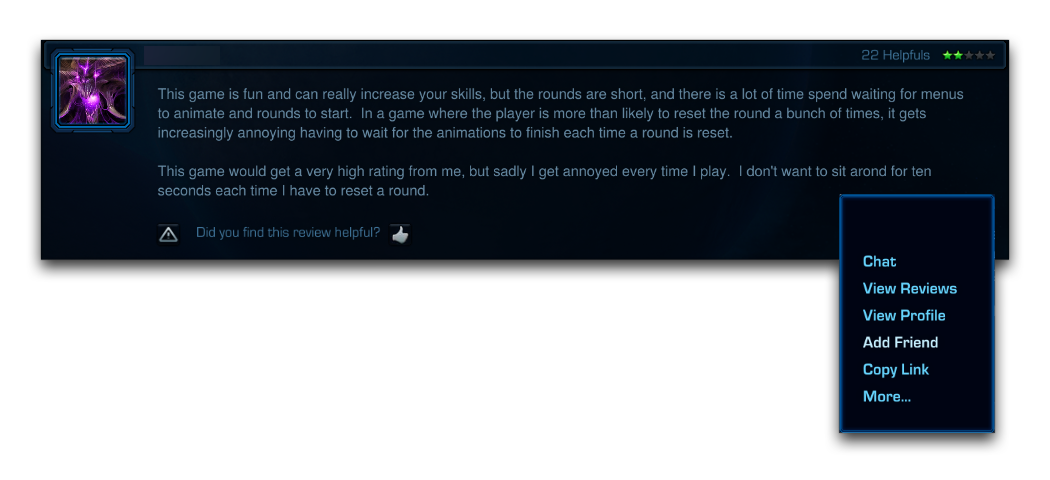Finding Testers¶
Game development requires a lot of testing to produce good results. Many of the best developers acknowledge that close observation and experimentation with the game is likely the most important design practice. Games are constantly changing systems, which can often make them counterintuitive. There are many unexpected behaviors that are best discovered, remedied, or even harnessed by frequent testing. Proper observation of a game is a matter of time, technique, and perspective. Perspective is best achieved by getting out of your own head and enlisting some fresh eyes for assistance, usually in the form of game testers.
The term ‘tester’ refers to a volunteer who will play an experimental Arcade game, battle on a new melee map, observe using a custom interface, or in any way use a creator’s project, then report back on their experience. Despite the public’s enthusiasm for creative projects using the Editor, it can often prove difficult or extremely time consuming to find testers who are both willing and effective. There are several practices that can help you combat this.
Preparing For A Session¶
Holding an effective test means preparation. Being the benefactor of other people’s volunteer effort means taking on the responsibility of making the test productive, focused, and as interesting possible given the current state of the project. While a faulty map can weigh heavily on a developer’s conscience, it is important to not rush to multiplayer testing as a first response. Always make sure to exercise your abilities to design, diagnose, and repair on your own first. While you need to get other people’s perspectives to grow as a developer, it’s also important to foster personal discipline.
When you’re ready to move into multiplayer testing, you should consider uploading a project build, which is a version published separately from the main release. This can keep the standard version clean and helps make sure you don’t disrupt any players currently enjoying your project. It can even allow you to share a low key, unlocked version of the game. This is useful if you’re looking for perspective from other developers on matters internal to the map, like triggers or data.
Testing is a rather general term and proper preparations can vary wildly. Good testing could mean taking the time to find highly skilled players to gain insight on a particular competitive map design, or making sure interface elements are fine-tuned enough to let new players get to the meat of an Arcade game.
In general, you want to isolate some part of your game. You should think about adding as many provisions as possible to proceed to the part of the game that is of particular interest and test it efficiently. This could mean introducing commands to skip opening cutscenes, or functions built into the game to repeat game elements for multiple tests. Ensure that each session has well-defined objectives and that these are made clear to your testers before beginning a test.
Some developers will use tests as promotional previews, a type of marketing. This won’t be addressed here, but can be an effective tool in building a community. Any following your game gains can contribute to actual testing, more interested parties means more potential testers. As a rule of thumb for the would-be developer, marketing is best accomplished by just working to make a better game.
Contacting Players¶
Contact potential testers through forums, chat clients, social media, and Battle.net’s built-in community features. Take advantage of any available channels to get in touch with fellow StarCraft II players and developers. StarCraft II community sites and other game-focused communities often support their own active forums and IRC channels.
Keep a flexible schedule. Remember to publish your game to all regions, as interested testers could live anywhere in the world. Coordinate with the people in different regions and time-zones to include as many players as is possible. For players available at times outside your own schedule, you can always elect to have someone else host the test. If you are part of a team, you can divide and conquer, hosting several tests at once.
When you’re ready to test, start by reaching out to your peers in the community. Developers can make for particularly strong testers, and offer a degree of technical help that the average player simply can’t. Developers may also have their own contacts, willing testers to whom they could introduce you. All that aside, you could always try inviting players from Battle.net public chat channels such as ‘SC2 Looking for Team’ or ‘Arcade.’
 Arcade-centric Chat Channels
Arcade-centric Chat Channels
Organizing Testers¶
Now that you’ve built yourself a rolodex of interested players, you can begin testing your game. Rather than rounding up your tester team this way for every session, use Battle.net features to help you organize these events. Maintain more consistent contact through the use of chat channels and groups.
Battle.net groups offer some tools for managing and communicating with testers. Create a group by navigating to the ‘Groups’ button on the main toolbar, found between ‘Friends List’ and ‘Menu.’ This will launch the ‘Create A Group’ window, where you’ll prepare your group. Once you have everything decided, select ‘Create’ to add the group to Battle.net. These properties are relatively innocuous, but you’ll likely want to set the group’s ‘Privacy’ to public to facilitate visitors. You should also note that clans based around games do exist, but the fact that players can only be in a single clan at a time within Battle.net could discourage potential testers.
If you’ve published your game to the Arcade as Public, then you can use the ‘Join Chat’ button from the ‘Game Info’ screen to enter an automatically generated chat hub for the game. Otherwise, you can always make your own chat channels. An additional tip is to mention groups, chat rooms, and other community locations you are using in your game’s ‘Map Info’ Description, in its loading screen, and in the game itself.
Feedback¶
Make sure to provide a channel of communication, like email or social media, alongside your map. This can prove useful as a means of gathering feedback. Remember that Battle.net also offers a ‘Reviews’ window for active games, which can be another source of insight into how players are enjoying your game.
Finding tough-but-fair constructive criticism here can give you a great lead on potential testers. Don’t hesitate to reach out to players who put effort into critiquing your game in a respectful manner. You can send them friend requests through Battle.net and strike up a conversation about their experience with the game. Good developers ask good questions.
If you’re still struggling to build a tester base after all this, remember that some types of project seem to have better luck finding testers. Some games are more enjoyable to test, while others need to spend a long time in development just to be playable. Different genres demand very different amounts of time and skill from players. If you are plagued by a lack of testers, try solving the problem with design. You can always try imagining a game that’s easier to test. This doesn’t necessarily mean compromising your interests, be creative. Remember, more testing means more opportunities to observe play, make changes, and improve as a developer.


